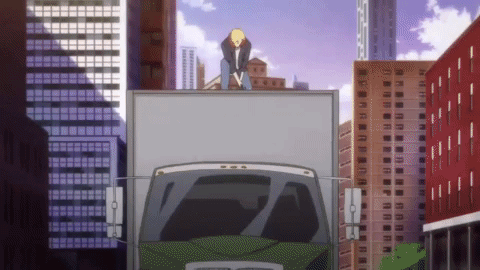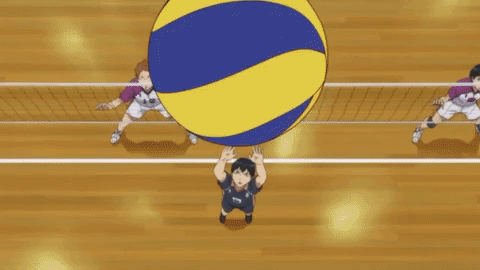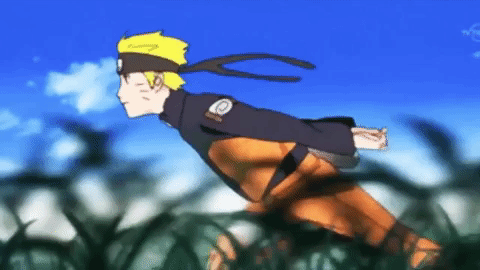Snake. Sheep. Monkey. Boar. Horse. Tiger.
These are the six steps to craft a fireball jutsu, a special power move from the anime Naruto.
Soon after beginning to watch Naruto, McCormick freshman John Sanchez found himself mimicking these “jutsus,” or hand movements, integral to the show’s power system. He was even tempted to try the main character’s favorite dish, ramen.
Sanchez’s friend always encouraged him to watch anime, but it wasn’t until October that he took up the show. The franchise has three parts to it: Naruto (220 episodes), Naruto: Shippuden (500 episodes), and Boruto: Naruto Next Generations, which has been running for the last 4 years. Since October, Sanchez has watched all of Naruto, 200 episodes of Shippuden, and the first three seasons of Attack on Titan, a unique blend of dystopia, horror, action and political intrigue. Some in the anime community call it a modern classic in the making.
Watching Attack on Titan, I finally understand the feeling of watching a classic being made right in front of my eyes.
— Gigguk (@GiggukAZ) January 12, 2021

First aired in 2013, Attack on Titan redefines what anime can be. It lacks many classic anime tropes – ridiculous outfits, guaranteed wins, power of friendship – which makes it a great show for people who can’t get into the anime medium.
“I actually spend time out of my day to catch up on whatever I need to watch because it does get really interesting, and most of the time it leaves me in suspense,” Sanchez said. “I would say my day’s incomplete unless I watch at least one episode.”
Anime is a style of Japanese animation usually derived from manga, or Japanese graphic novels. It’s aimed at both child and adult audiences, though some of the most internationally well-known ones – like Dragonball Z and Pokémon – had primarily young watchers. Those two shows belong to a genre known as shounen, in which the stories are aimed at young teenage boys. Strong, male main characters, plenty of fight scenes, guaranteed wins – these stereotypes run rampant in the shounen sub-genre but don’t define anime as a whole.
Anime genres can be anything from cutesy slice-of-life presentations to gritty, psychological horror. In other words, they can be just as diverse as any other entertainment medium. The defining characteristics of anime are the Japanese culture and 2D art and animation style. Large eyes, exaggerated hairstyles and dramatic voice acting are present in nearly all anime, though they are subject to variation depending on the genre.
From Skeptics to Fans
Medill freshman Allison Rauch’s boyfriend had always been a fan of anime, but Rauch herself didn’t indulge in his interests until April of last year.
“A lot of my friends were really into it,” she said, “but I didn't really start watching it more regularly until this past year during quarantine because my boyfriend wanted me to watch with him.”
It took them a couple tries to find something Rauch liked (the action ones were too “intense and dramatic” and she found romance to be “really annoying”), but in the end the first one that hooked her was Erased, a 12-episode supernatural mystery. They’re currently watching The Disastrous Life of Saiki K, a satirical comedy.
Saiki K follows Kusuo Saiki, a cynical high school student with psychic abilities. Most of the episodes revolve around him desperately trying to keep his abilities a secret from the rest of the oddball cast. The series pokes fun at typical anime tropes such as unnatural hair colors, lack of time continuity and the hopelessly oblivious love interest. Anime comedy is typically centered around simple, slapstick comedy paired with exaggerated reactions, so rather than rejecting those stereotypes, Saiki K builds depth and heart into them until they barely resemble their cookie-cutter origins.
“I did have kind of a negative opinion of it, honestly,” Rauch admitted in regards to her former attitude about anime. “This sounds so mean, but the people I knew in middle school that were into it were kind of weird, and some of the anime I had seen also seemed really out there. But Saiki K, I love that kind of satirical humor anyway. I think through giving the genre a try I've been able to find stuff I really like.”
Bienen and Weinberg freshman Greta McNamee started watching Banana Fish, a heavy crime-thriller anime set in New York City, after seeing a lot of TikToks about it. “They were like, ‘wow, this ruined my life,’” she said. “I was like, ‘I'm ready to get my life ruined,’ so I went to Amazon Prime and watched it. There were so many emotions, but it was really good.”

McNamee also watched a significantly less tragic show called Haikyuu!! It’s a slice-of-life anime about a young, up-and-coming volleyball team.
“It was really sweet, especially since I was in some extracurriculars in high school where we were really close and also had rival schools that we competed against,” she said. “ I don't necessarily want to go back to high school or anything, but it was cute to watch.”

Anime in Streaming Services
Sanchez isn’t the only person getting into the anime scene for the first time. Netflix reported that over 100 million households around the world watched at least one anime title in the first nine months of 2020, a 50% increase from 2019. Even Northwestern’s Anime Club membership has more than doubled since the start of the school year.
According to Weinberg junior and NU Anime Club president David Marentic, the most significant increase in club membership came this school year and brought the organization’s roster to 39, more than double the number at the start of September. Even though the club’s numbers are rising, for most veteran anime watchers at Northwestern, the most salient difference this year is a cultural shift.
“It's becoming less of a niche thing, especially now that Netflix picked up a bunch [of shows],” said McCormick sophomore Kevin Xue, the Anime Club’s tech chair. “I think that was a really big turning point in terms of people starting to watch it because everyone has Netflix.”
Although Netflix first ventured into anime in 2014, it wasn’t until 2017 that the streaming service announced it would be spending a sizable chunk of its budget on the medium, according to The Verge. Netflix is home to some of the most mainstream shows: My Hero Academia, Attack on Titan and Jojo’s Bizarre Adventure. Since Netflix’s entire platform isn’t dedicated to anime, some of the more underground shows get left behind. That’s where anime-specific streaming services like Funimation and Crunchyroll are available to pick up the slack, according to McCormick sophomore and Anime Club secretary Antony Traino.
Crunchyroll has seen a large increase in paying subscribers in recent years, and Funimation announced last December that they would be buying the competing streaming service. They invested significant resources into bringing anime culture to an international stage by streaming currently-airing shows and selling official merchandise and DVDs. Funimation operates SimulDubs, which is anime dubbed over with English-speaking voice actors. Most anime is produced in Japan and is therefore in Japanese, so not having to read subtitles can make anime more accessible to new viewers.
There’s also more anime coming out that appeals to groups beyond the established anime-viewing demographic. Shows like Attack on Titan tend to step away from Japanese culture and toward internationally-appealing concepts.
“There's good stuff out there, and I think that causes the stigma to go down,” Xue said. “The more the stigma goes down, the more the popularity goes up, and the more popularity goes up, the more the stigma goes down.”
Traino also thought anime’s popularity was a good development.“For anyone who was trying to be a hipster and watch anime because it wasn't mainstream, it's a terrible thing,” he said. “But it's also great for people who started watching in earnest in 2009. Back in that time it was not really okay, but now you get a lot more widespread acknowledgement that it’s a real art form and not just some fringe media.”
Anime is certainly gaining greater attention in the U.S. The movie sequel to Kimetsu no Yaiba, otherwise known as Demon Slayer in English, which outsold Hayao Miyazaki’s acclaimed 2003 film Spirited Away, is set to release to U.S. theaters in late April. Koyoharu Gotouge, the author of the manga that Demon Slayer was based on, was even recognized in the 2021 TIME100 Next list.
Internet Cultures Boost Anime’s Popularity
Traino also cited a slightly less official reason for anime’s increase in popularity: memes.
“Very much anime has taken over meme culture,” he said. “There's a lot more anime memes over the past few years, like the evolution of the Jojo reference.”

“It can be reminiscent of a cartoon to some people,” McNamee said, “which can really scratch an itch because some people like being transported back to their childhood. It's hard not to like it, you know?”
For the foreseeable future, McNamee, Sanchez and Rauch are going to stick with the rising medium.
“[My boyfriend’s] gonna make me keep watching with him, but I think I'll keep watching by myself,” Rauch said. “I might explore some of the shows that’ve been recommended to me.”
Sanchez added, “I feel like more people are watching [anime in] their spare time. They want to get something new. Even now I'm trying to get some friends to watch it. Now I'm that guy.”
*Article thumbnail "Naruto Uzumaki" by cocamert is licensed under CC BY 2.0